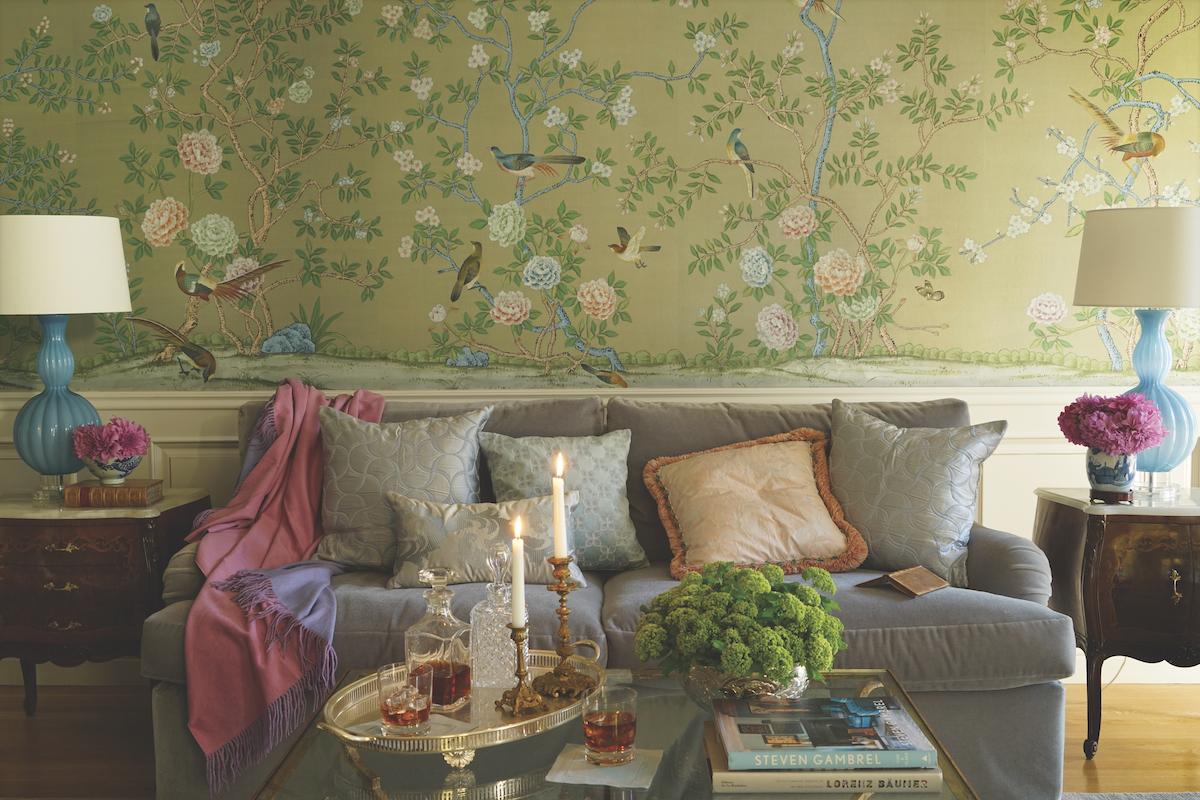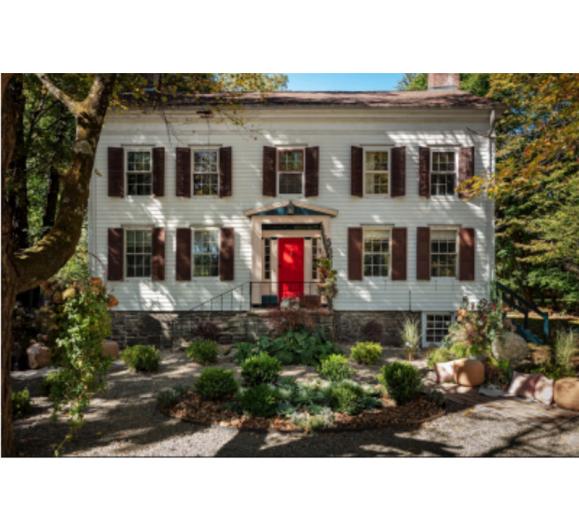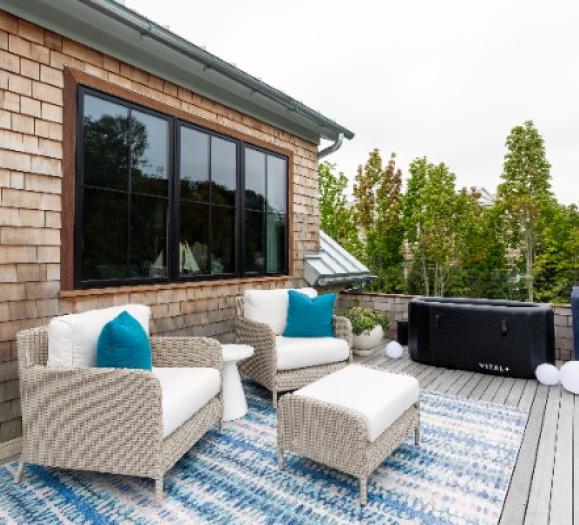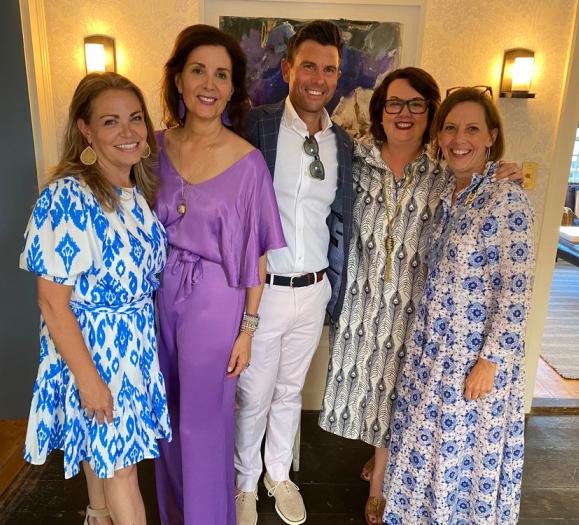This is the time of year when the design community starts looking ahead. Markets have mostly wrapped, the next hot colors are being announced, and all eyes are on the emerging design trends for the next year and beyond.
But this year, home design trends go beyond colors of the year and the latest HGTV craze. The coronavirus pandemic has forced people to live differently, and as a result their homes have to function in a way they hadn’t before. Whereas in the past, runway fashion and European design styles might have driven the next phase of home design, this year it’s all about lifestyle.
“I think the trend is going to be determined more so by how people really live instead of what they saw in a magazine or what a movie suggests,” says Joseph A. Berkowitz, head of JAB Design Group in Penn Valley, PA. “People are really starting to think of how they function in their own homes more than what people are going to think walking into their homes because there’s not as much entertaining going on. What do I need? What makes me comfortable? What does my family need? The trends are going to be about real lifestyle, not just flash.”
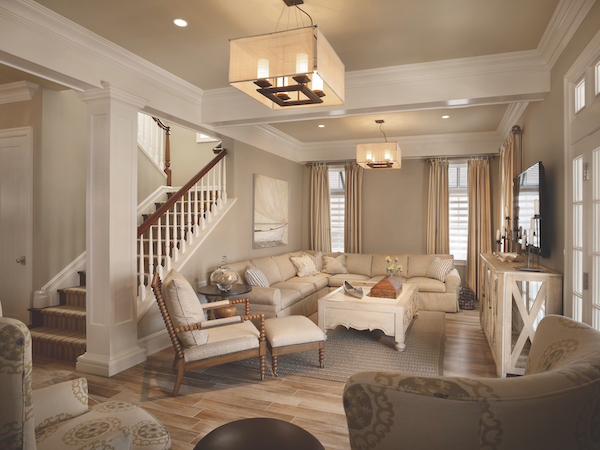
Many offices have gone fully remote through at least the end of the year, requiring office workers to create home office spaces. Full or partial remote schooling means children are home and learning during the day. At night, rather than dining in local restaurants, families are ordering takeout or cooking at home, making use of their kitchens. Instead of going to a movie or to the theatre, living rooms are the main source of entertainment. Clients are demanding a lot from their homes now, and it’s up to designers to deliver.
“My clients are all professionals, most with kids from 12 years old to post-college who’ve all come together for some period of time with overlapping work/study times, meaning some kind of private space is crucial,” says Kristi Nelson, Managing Director of KMNelson Design LLC in Los Angeles. “They also like to entertain, which has meant extra focus on outdoor spaces. So the requests have covered a gamut of issues that we would deal with anyway, but maybe they are noticing the issues more immediately because they can’t go somewhere else to get away from them.”
Because of this, Nelson believes that the open concept floor plan will fade in popularity in favor of separate, divided living spaces to allow everyone in the home privacy during the extended hours spent at home.
Cozy, Casual, Comfortable
Aside from the layout, one major theme is apparent in coronavirus-era home design: comfort.
“People are trying to make their spaces cozier and more comfortable,” says Farah Merhi, Founder of Inspire Me! Home Decor and VCF Designer Looks Style Expert. “We’re in true nesting mode because our homes are now our every-space, from our office to our homeschool space to our kitchen and relaxation rooms.”
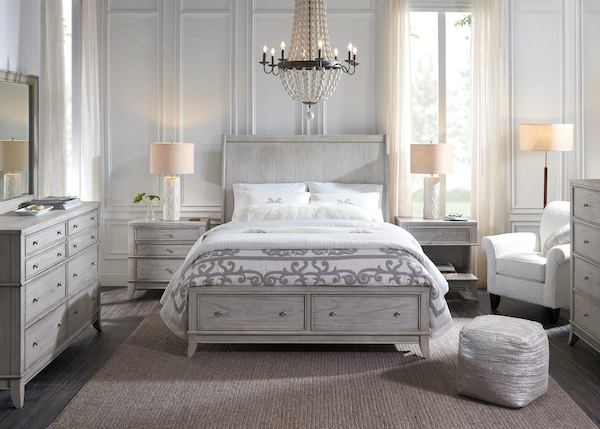
Kitchens are becoming less of a showpiece and more of a functional space for cooking, eating and generally spending time as a family. Living rooms are also shedding some formality.
“A lot of living rooms are being redone to be a little more casual and comfortable and den-like so that people can really hang out in these spaces,” Berkowitz says. “They’re putting televisions in living rooms. They maybe were just a pass-through space, but now they’re really hanging out there and using them on a daily basis as the hub of the home.”
The cozy comfort theme is translated in colors, materials and textures throughout the home. Cold grey and white color palettes are being traded for warmer neutrals with pops of color and pattern throughout.
“I love seeing the tide turn from neutral palettes and texture as pattern to exuberance in both color and pattern,” Nelson says. “I’m personally and professionally known to love and celebrate both so I have always used color and pattern everywhere — architectural finishes, furnishings, accessories, you name it. So to see that colors of all types beyond white/beige/gray/greige as well as patterns are being used again on walls, ceilings, floors, upholstery, lampshades — you name it — just gives me joy.”
Woods are getting lighter, and cerused finishes are gaining traction, providing a soft whitewashed effect on hard surfaces. Textiles, too, are contributing to the casual feel.
“Everything’s really getting a little more casual and comfortable,” Berkowitz says. “Formal drapery isn’t as fancy. Sofas are getting a little bit more overstuffed and fabrics are becoming more texture-heavy and comfortable. Everybody’s into soft, comfortable area rugs. They’re sitting on the floors or lying around or playing with their dogs on the ground.”
Part of this comfort also means the ability to customize furnishings to the client’s specifications to give them exactly what they need.
“People are also feeling more in tune with their own personal style and what they want to express of their true selves,” Merhi says. “So anytime you can customize your own piece of furniture — everything from the fabric and color to how firm or soft you want your cushions — that’s going to be major.”
Durability and functionality also play a role in trending furnishings, as furniture is now being used more often, and for more than one purpose.
“We’re seeing deep large pit-style couches or modular customizable couches that are easily moved around for lounging, pillow fort building, you name it,” Merhi says. “The home has to become a much more versatile place now that we’re doing everything in it. So we’re also seeing people transform their dining rooms into a place where their kids can spread out and do homework.”
Selecting a dining table with a leaf that pulls out for extra homework space, for example, can be useful for remote learning. Stylish curio cabinets can keep school supplies out of sight while still blending in with the decor. Homes can accommodate the functional realities of these lifestyle shifts while staying true to an attractive design style.
A successful design will blend the function that clients need to live their lives with trending colors and styles. For Nelson, combining form and function while making trends into something timeless is what she has always aimed for in her design practice.
“My work has always been about form follows function and timelessness,” she says. “Interior design is an investment and clients appreciate that we understand and acknowledge that so we don’t make changes just to do it or follow trends. KMND’s tagline for almost 20 years has been ‘Inspired design, timeless style’ long before ‘timeless’ and ‘bespoke’ were by-words in our industry. I have always believed that our environments evolve as we do, the past present and future make the whole narrative, they are not mutually exclusive and design with that in mind.”
Lasting Impact
The design business is booming, which is a trend in itself. Vacation budgets are being reallocated toward home improvements, and many designers are busier now than ever. Berkowitz doesn’t see that slowing down.
“I really feel like now that people are getting into this mode of looking within their homes, spending more money, I think it’s going to continue because that’s not a trend,” he says. “Once people start, it leads them down a path — do one room, do another, do the inside, move to the outside. So I do feel like business is going to be really strong for a long time, in spite of anything in politics or all the crazy things going on in the world. I think that this is going to stay that way.”
Nelson agrees that the longer people are stuck at home, the more updates they’ll find to make.
“Art and design have always been reflective and reactionary,” she says. “We are in a time of major change and instability, yet at the same time, because of COVID we are stuck in a kind of limbo. So there is an intrinsic need for escape, buffering, positive excitement, happiness, good energy, all of which move the needle toward the things that fill that need.”
Trends come and go, but the lifestyle shifts caused by the pandemic don’t seem to be going anywhere. Berkowitz says he doesn’t see design styles moving away from the casual comfort that homeowners are gravitating toward any time soon.
“Things are changing,” Berkowitz says. “Businesses are realizing they don’t need all their employees there, that they can work from home and can still get things done. People are realizing that they can use their homes differently. I think people will continue to use these spaces in their homes that they’ve redone and made more casual and more livable just for that purpose. I don’t think that it’s going to change. I think it’s really just directing a new future in the design industry.”



